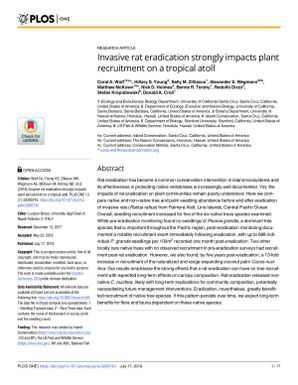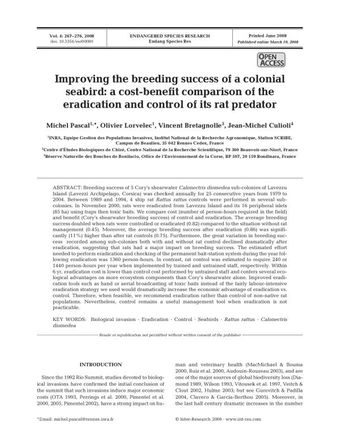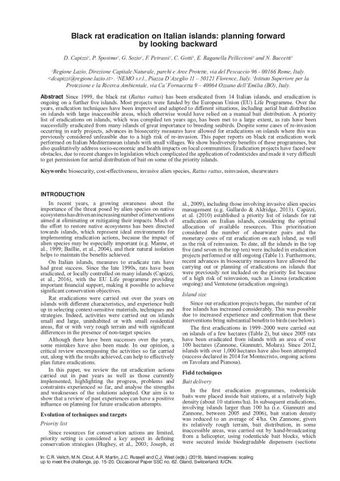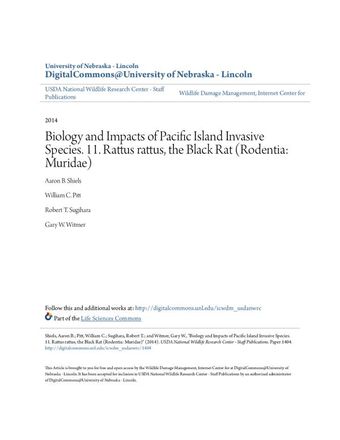Invasive rat eradication strongly impacts plant recruitment on a tropical atoll
- Description:
- Rat eradication has become a common conservation intervention in island ecosystems and its effectiveness in protecting native vertebrates is increasingly well documented. Yet, the impacts of rat eradication on plant communities remain poorly understood. Here we compare native and non-native tree and palm seedling abundance before and after eradication of invasive rats (Rattus Rattus) from Palmyra Atoll, Line Islands, Central Pacific Ocean. Overall, seedling recruitment increased for five of the six native trees species examined. While pre-eradication monitoring found no seedlings of Pisonia grandis, a dominant tree species that is important throughout the Pacific region, post-eradication monitoring documented a notable recruitment event immediately following eradication, with up to 688 individual P. grandis seedlings per 100m2 recorded one month post-eradication. Two other locally rare native trees with no observed recruitment in pre-eradication surveys had recruitment post-rat eradication. However, we also found, by five years post-eradication, a 13-fold increase in recruitment of the naturalized and range-expanding coconut palm Cocos nucifera. Our results emphasize the strong effects that a rat eradication can have on tree recruitment with expected long-term effects on canopy composition. Rat eradication released nonnative C. nucifera, likely with long-term implications for community composition, potentially necessitating future management interventions. Eradication, nevertheless, greatly benefited recruitment of native tree species. If this pattern persists over time, we expect long-term benefits for flora and fauna dependent on these native species.
- Display date:
- 2018
- Collections:
- Secretariat of the Pacific Regional Environment Programme (SPREP)
- Publisher:
- Island Conservation
- Content partner:
- Secretariat of the Pacific Regional Environment Programme (SPREP)
- Availability:
- Not specified
-
Copyright status: All rights reservedFind out more about what you are able to do with this itemThis item is all rights reserved, with means you'll have to get permission from Secretariat of the Pacific Regional Environment Programme (SPREP) before using it. For more information, please see our use and reuse page.What can I do with this item?Non-infringing useNZ copyright law does not prevent every use of a copyright work, and this item may be hosted by an international institute or organisation. You should consider what you can and cannot do with a copyright work.No sharingYou may not copy and/or share this item with others without further permission. This includes posting it on your blog, using it in a presentation, or any other public use.No modifyingYou are not allowed to adapt or remix this item into any other works.No commercial useYou may not use this item commercially.
Related items
Welcome and warm Pasifik greetings
The information on this site has been gathered from our content partners.
The names, terms, and labels that we present on the site may contain images or voices of deceased persons and may also reflect the bias, norms, and perspective of the period of time in which they were created. We accept that these may not be appropriate today.
If you have any concerns or questions about an item, please contact us.



